TABLE OF CONTENTS
To the average consumer, PNY probably doesn’t ring much of a bell — despite the fact that this company was founded nearly four decades ago and has been making graphics cards for what feels like an eternity.
Still, most people, despite not being tightly acquainted with its offerings, have at least heard of PNY or have, at a minimum, seen one of its graphics cards on the shelves at their local hardware shops.
PNY simply isn’t as well known as the MSIs, GIGABYTEs, and EVGAs of the world.
There’s no other way to put it. Does that lack of mainstream appeal mean that its GPUs should be avoided, though? What’s at the crux of the issue, anyway? Why has this company, as entrenched as it is, not made a much bigger splash?
And, perhaps equally as important, how well do its graphics cards perform, both when observed in a vacuum and when juxtaposed to the offerings of the biggest and most prominent “players?”
It’s a wholly fascinating topic as PNY is not only a reputable board partner, but is also held in incredibly high regard by NVIDIA itself — which, needless to say, speaks volumes.
There’s a fair bit of ground to cover, so let’s begin!
History of PNY
PNY was founded in 1985 in Brooklyn, New York, and is primarily known for manufacturing graphics cards (consumer, workstation, OEM, data center), USB flash drives, RAM, solid state drives (both internal and external), adapters, and flash memory cards, amongst other things.
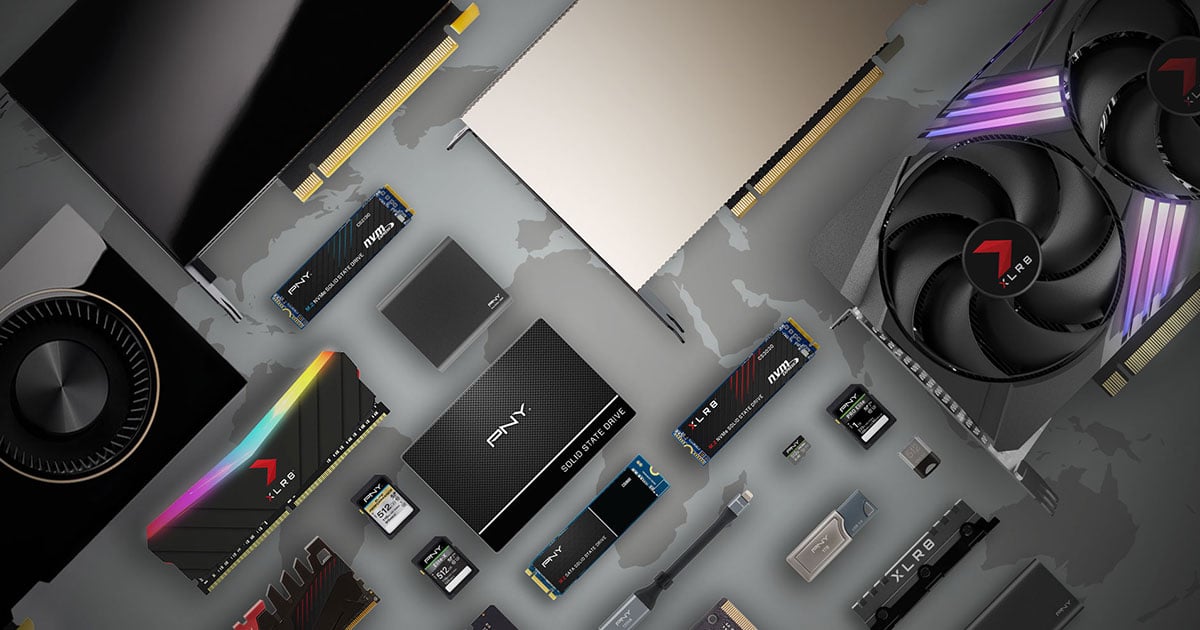
Image Credit: PNY
The most interesting thing about PNY, however, is that it’s the company NVIDIA tasked with devising and manufacturing both its workstation-grade RTX graphics cards (formerly known as Quadro) and its data center offerings.
PNY is currently headquartered in New Jersey but nonetheless maintains numerous offices across North America, Europe, and Asia.
Why Aren’t PNY GPUs More Popular?
PNY has generally been more focused on creating “professional” graphics cards as opposed to consumer ones.
Its mainstream products, therefore, never get the same kind of coverage from media outlets and reviewers as, for the most part, they don’t tend to push the envelope in any particular way.
That might seem rather uninteresting or perhaps even damning, but one mustn’t forget the fact that PNY is NVIDIA’s exclusive board partner for workstation GPUs — that little tidbit alone serves as proof of its merit and ability to execute.
Those graphics cards are incredibly expensive and they need to be tested and built to satisfy the highest of demands and standards.
And, needless to say, PNY was and still is up to this most tremendous task.
The second problem lies in PNY’s marketing efforts — or lack thereof.
All other AIBs are in a constant arms race. They need to conjure up the most jaw-dropping designs, to push the very boundaries of the dies which NVIDIA and AMD give them, to equip their GPUs with the best and most intricate cooling assemblies, shrouds, and so on and so forth.
They’re trying their absolute hardest to stand out from the crowd — be it in performance, design, acoustics, or sheer value.
PNY, on the other hand, is seemingly content with both its current position in the market and its tight liaison with NVIDIA.
It, too, competes in the consumer segment of the market, but generating an insane amount of revenue through this channel specifically obviously isn’t as big a need for them as it is for most of their competitors; all other AIBs, on the other hand, can only compete for the money of the gaming populace (and any creative professional who doesn’t want to spend an otherworldly sum on a “pro-grade” GPU).
The overall aesthetic of a PNY graphics card also leaves a bit to be desired. They’re bog-standard when it comes to design, with no overly impressive shrouds or over-the-top RGB.
They’re tame visually and, as such, don’t really cater to any audience in particular. Now, don’t misconstrue this as criticism as they’re perfectly fine overall, but there’s just very little to get excited about.
Are PNY GPUs Worth It?
They’re solid picks overall, and products which offer a very respectable level of performance without any overly glaring issues or flaws.
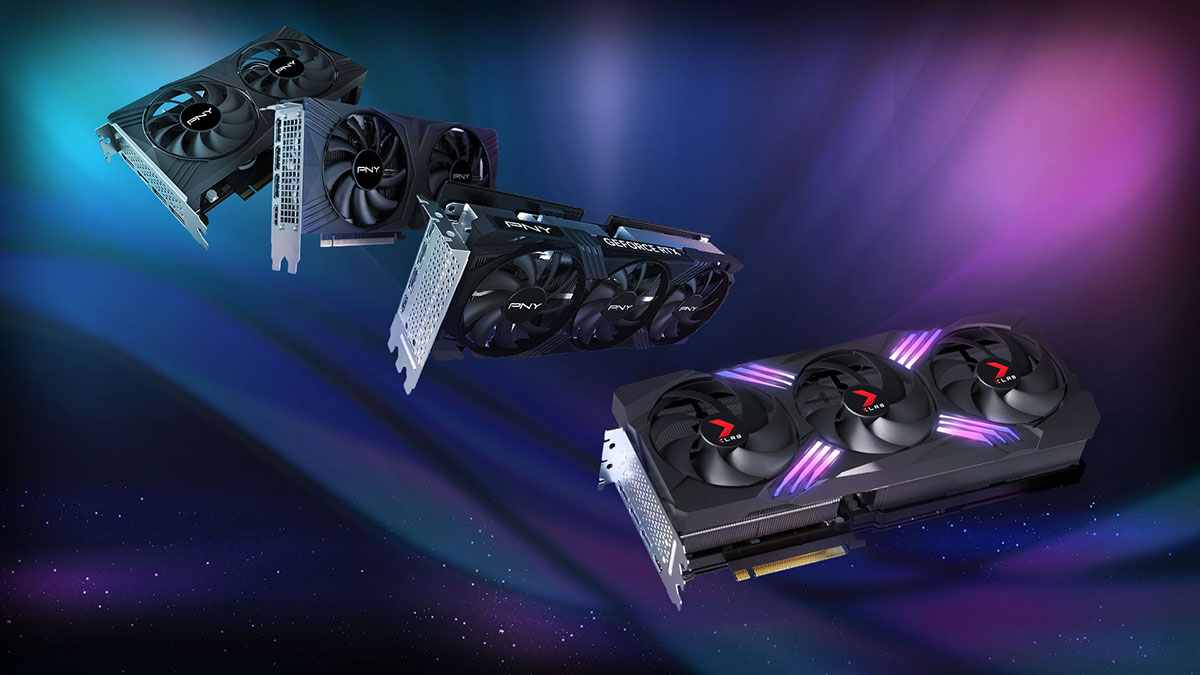
Image Credit: PNY
They are, at times, a bit overpriced, but that varies wildly from one product generation to the next, alongside the very state of the market — and even one’s region and its pricing trends. PNY’s offerings may well be more affordable at your local retailers.
Its OEM-looking VERTO line of graphics cards mostly adheres to official MSRP pricing. The “gaming-focused” XLR8 line, on the other hand, tends to sell at a slight premium. But, again, these things change all the time, so by no means should you take that statement as gospel.
All in all, you most likely won’t be disappointed in any which way should you opt to invest in one of PNY’s latest graphics cards — the RTX 30 and 40 series, in particular. Older models aren’t quite as balanced and fine-tuned.
You should, however, do a bit of research and compare said models to their direct competitors, both in terms of price and overall performance; we are no longer held hostage by the oft-covered crypto craze, which means one finally has a long list of options to choose from.
It’s also worth pointing out that PNY’s offerings are, at times, ever so slightly slower than comparable models from OEMs like MSI or ASUS (amongst others), which stresses the importance of doing a bit of research before making any kind of purchasing decision.
Then again, this (potential) variance or gap of sorts isn’t going to result in an overly tangible performance delta, but it’s still worth mentioning.
To see how PNY’s VERTO RTX 4070 stacks up against its direct competitors, make sure to watch the following video from Hardware Unboxed:
Are PNY GPUs Reliable?
They are, for the most part. Users haven’t reported anything overly egregious and the general consensus is that PNY’s offerings are well-rounded, quiet, and equipped with adequate cooling assemblies.
They’re not that good of a pick in regards to overclocking and tinkering, though, so just keep that in mind if you’re the kind of person who wants to squeeze out every last bit of performance.
Should something happen to go awry, though, you might find yourself in a bit of pickle — which leads us to a very important talking point:
PNY — Warranties, RMAs, Experiences
No company is perfect. That much is a fact.
And, needless to say, issues arise all the time — hardware that’s DOA, quality control quirks, coil whine, and so on and so forth. But it’s how a company deals with adversity and how well — if at all — it handles its customers’ woes that matters most.
PNY, in this regard, is reportedly amongst the worst. Its RMA rates aren’t high, but that can easily be attributed to the fact that its offerings are nowhere near as popular as those from its competitors.
Users have reported horrendous experiences with PNY’s customer support and the fact that the company is seemingly willing to void one’s warranty for a myriad of different reasons.
In other words: it tends to pin the blame on the customer.
Now, what would happen to you specifically depends on both the nature of the issue you’re facing and your region. And even if you do get it all resolved, the whole experience will most likely not be pleasant.
PNY and world-class customer support, based on numerous reports, are mutually exclusive.
If you have to RMA through PNY directly (as opposed to a distributor or retailer), you might also have a nightmarish experience. Many users have reportedly tried getting in touch with PNY through all sorts of channels (phone, email, social media) but to no avail.
As always, your mileage will vary.
PNY GPU Warranties
PNY offers three-year warranties on both its professional and its consumer-grade graphics cards.
If you’re interested in buying one of PNY’s workstation GPUs — and you happen to live in the European Union, Norway, or Switzerland — you can also purchase an extended warranty and, in doing so, bump that number up to five years instead of three.
As is so often the case, warranties are not transferable, so just keep that in mind if you’re buying a used graphics card on the second-hand market.
Some AIBs are pretty lenient towards this, others less so. PNY, most likely, falls under the latter category.
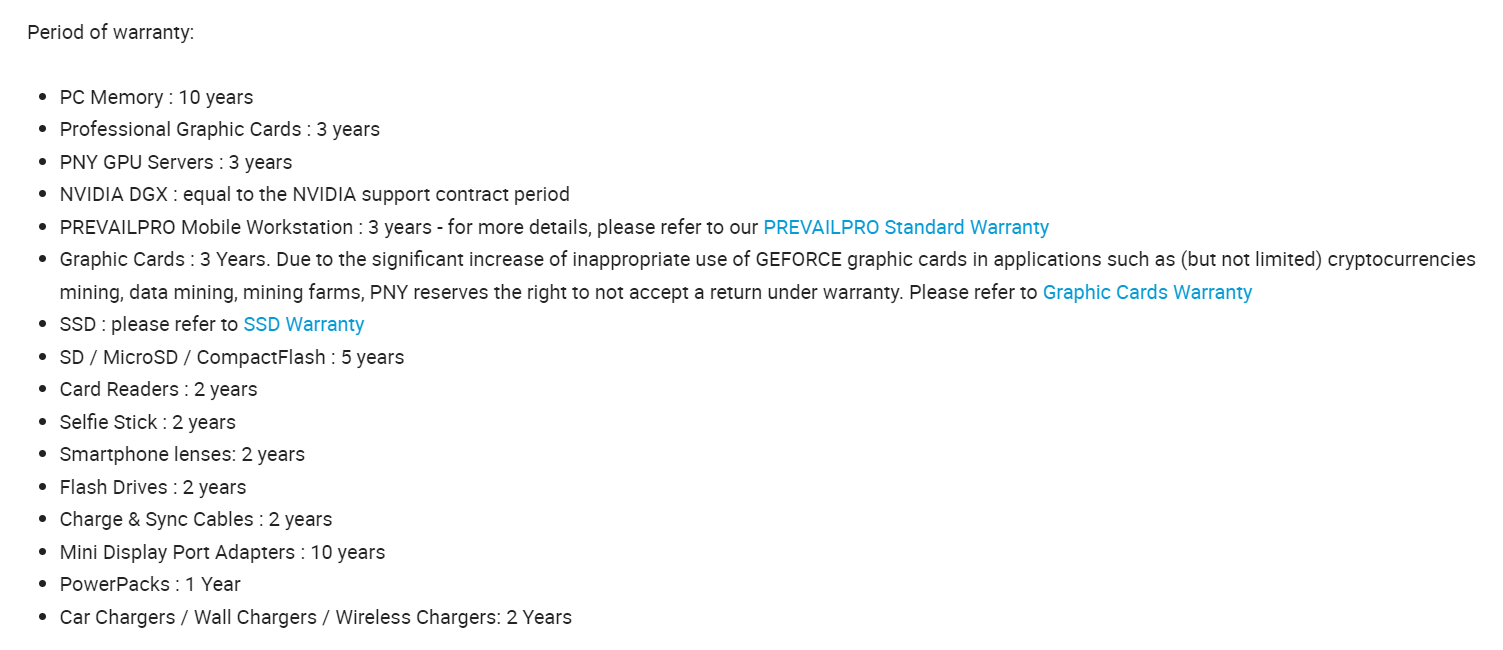
Source: PNY, Official Website
Does PNY Have GPU Software?
It does, and it’s called VelocityX. If you’re interested in checking whether your graphics card, in particular, happens to support it, make sure to check the following list.
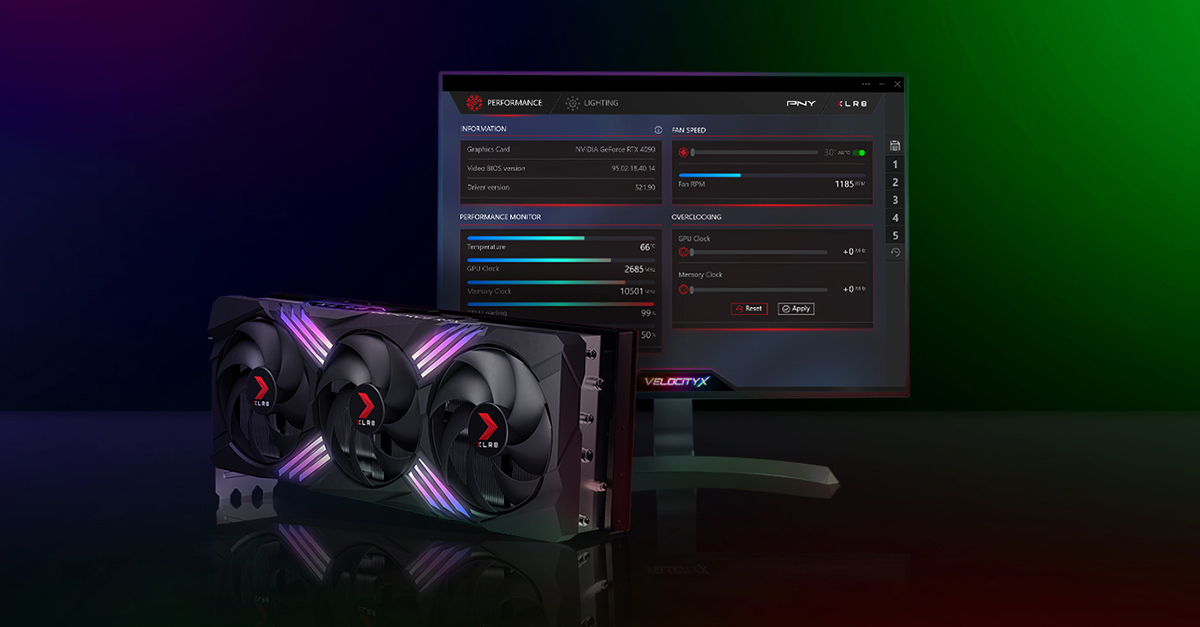
Image Credit: PNY
All in all, the software itself is fairly streamlined and aesthetically pleasing, and it’s actually packed with more features than one would expect.
Features like performance monitoring, fan speed control, and overclocking (alongside RGB-related adjustments) are all present, and they’re designed in such a way to be easy to use and tinker with.
Conclusion
And so, to answer the opening question: is PNY a good GPU brand?
It is, but it’s not without fault, and the sheer number of horrendous experiences which people have had over the years also warrants some hesitation and dread.
PNY’s offerings are well-tuned and balanced in regards to thermals and fan noise, which makes them somewhat easy to recommend.
Then again, they’re rarely (if ever) any cheaper than competing products, which means we’d always go with an equivalent model from, say, ASUS, MSI, or GIGABYTE.
FAQ
Let’s go over a few potential questions you might have regarding PNY, its graphics cards, and all which they entail:
Is PNY a Good GPU Brand?
It is, and that would perhaps be the most apt way of describing PNY’s offerings: good.
Its graphics cards are perfectly fine and mostly perform exactly as expected, but they’re neither performance behemoths nor value champions.
The fact that PNY rarely gets any coverage online isn’t indicative of anything other than the fact that its priorities lay elsewhere — namely the OEM and workstation markets.
Are PNY GPUs Good?
Its last two generations — the RTX 30 and 40 series, to be more particular — are supposedly quite stellar in regards to thermals, performance, and fan noise.
They’re not designed to push the envelope and break any overclocking records but are, instead, well-rounded picks for both gamers and creative professionals alike.
They are, at times, a bit overpriced, so make sure to do a bit of digging, lest you end up overpaying for a graphics card that doesn’t really stand out in any particular way.
They are pretty reliable, though, so if you’re after an NVIDIA GPU and one of PNY’s models happens to have caught your eye, you need not hesitate.
Are PNY GPUs Worth It?
PNY isn’t exactly known for being a “value pick” (not in 2023, at least), so you’d be wise to scour the market and compare prices.
Overall, though, they’re well-rounded in regards to thermals, fan noise, and sheer graphics oomph, but by no means should they be your first pick if you’re interested in overclocking and squeezing out every last bit of performance.
How Long Are PNY’s GPU Warranties?
PNY’s consumer graphics cards are all covered with three-year warranties.
Professional-grade GPUs, on the other hand, can be covered for up to five years, but only in certain regions.
Does PNY Make AMD GPUs?
It does not; PNY is only in the business of making consumer, OEM, and workstation-grade NVIDIA graphics cards. And, by the looks of it, that isn’t going to change any time soon, especially given just how good a relationship it has with “team green.”
Over to You
Have you ever owned a PNY graphics card and, if so, what was that experience like? Let us know in the comment section down below and, in case you need any help, head over to our forum and ask away!
![Is PNY a Good GPU Brand? [Updated] Is PNY a Good GPU Brand? [Updated]](https://www.cgdirector.com/wp-content/uploads/media/2023/12/Is-PNY-a-Good-GPU-Brand-Twitter-1200x675.jpg)
![Guide to Undervolting your GPU [Step by Step] Guide to Undervolting your GPU [Step by Step]](https://www.cgdirector.com/wp-content/uploads/media/2024/04/Guide-to-Undervolting-your-GPU-Twitter-594x335.jpg)
![Does Temperature Impact My GPU’s Performance? [Absolutely!] Does Temperature Impact My GPU’s Performance? [Absolutely!]](https://www.cgdirector.com/wp-content/uploads/media/2023/09/Does-Temperature-Impact-My-GPU-Performance-Twitter-594x335.jpg)
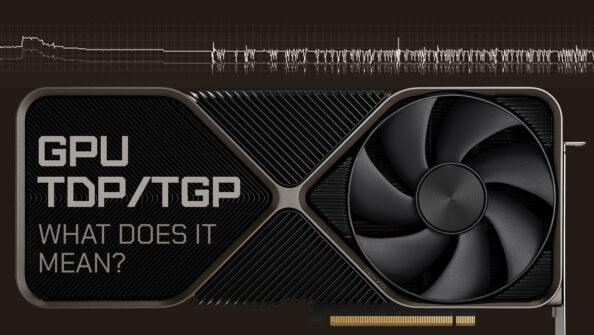
![How To Adjust Your GPU’s Fan Speeds [Step-By-Step] How To Adjust Your GPU’s Fan Speeds [Step-By-Step]](https://www.cgdirector.com/wp-content/uploads/media/2023/07/How-to-adjust-your-GPUs-Fan-Speeds-to-prevent-it-from-overheating-Twitter-594x335.jpg)

0 Comments